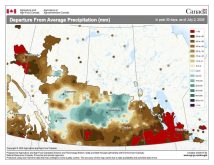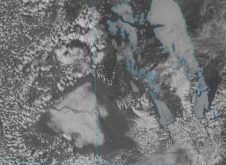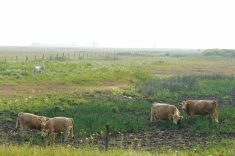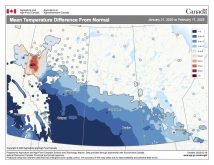Livestock producers have a closer-than-normal watch on low dugouts, although Manitoba Agriculture says levels aren’t near the danger zone yet.
No regions were reporting drinking water shortages as of early June, although Manitoba’s June 4 crop report noted varying levels across the province. Dugouts in the Interlake flagged at a third to two-thirds full, while eastern dugouts sat at 75 per cent full and both the southwest and central regions had “adequate” water.
Shawn Cabak, Manitoba livestock specialist for the central region, said lack of recharge this spring, as well as evaporation since, had some producers pumping to their dugouts this spring.
Read Also

Pig transport stress costs pork sector
Popular livestock trailer designs also increase pig stress during transportation, hitting at meat quality, animal welfare and farm profit, Agriculture and Agri-Food Canada researcher says
“I don’t think there’s anything dire yet, but we are only mid-June and there’s still lots of summer to go,” he said.
June 14 storms, which brought over 40 millimetres to some parts of central Manitoba along with damaging hail from the southwest region most of the way to the Red River, may mean some improvement, Cabak said, although the rains were likely not enough for significant run-off. Without that run-off, he said, gains would be limited to how much water directly fell into the dugout.
“We got one to two inches, so it’ll help, but it still won’t bring the dugout up very much,” he said.
The June 14 storms brought little moisture to the Interlake.
Ray Bittner, provincial livestock specialist in the Interlake, says his region is still anxious for rain, despite the downpours that other parts of the province have reported.
Manitoba Agriculture weather stations put rainfall below 70 per cent of normal through most of the Interlake, with the driest area accumulating only 20 millimetres of rain since the start of May as of June 10.
Bittner is advising farmers to have an alternate watering plan, such as pumping from drilled wells, if dugout levels are dropping.
“This isn’t the first time we’ve had a drought. There are some drilled wells out there that haven’t been used in 10 or 15 years,” he said. “Testing them now would probably be a good idea.”
The Manitoba Beef Producers has also heard reports from its members concerned over dugout levels, although president Ben Fox says such reports are mostly isolated.
“Some folks have had their problems resolved with some rain, but currently, obviously, our advice to producers would be to make sure they continue to check their water sources and monitor their livestock to be able to make adjustments as necessary,” he said.
Both Bittner and Cabak raised the option of a pump system, something Cabak argued would not only mean more consistent water, but higher water quality, something both provincial livestock specialists have touted for herd health and productivity in the past.
“Some reservoirs are bigger than others, so if they have a large capacity, there’ll be less concern versus some of the smaller dugouts, or if they have multiple dugouts,” Cabak said. “Definitely, they should be keeping an eye on their water supply and if water volumes are dropping or to the point where livestock aren’t getting adequate quality or volume, that will affect gains and it could affect health.”
Cabak says he has not seen a major rise in interest in alternative watering, although Bittner has seen a slight jump in producers asking about solar watering systems and other such options since weather turned dry last year. He added, however, that, “the traffic hasn’t sped up a great deal. It doesn’t reflect the amount of problem that could occur yet.”
Low dugouts have caused less concern in the northwest, where a string of storms has brought precipitation well above normal in areas like Roblin, Ethelbert and Swan River.




















